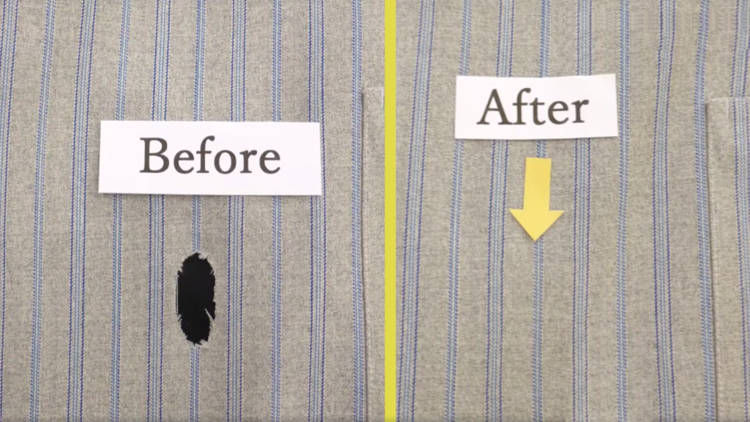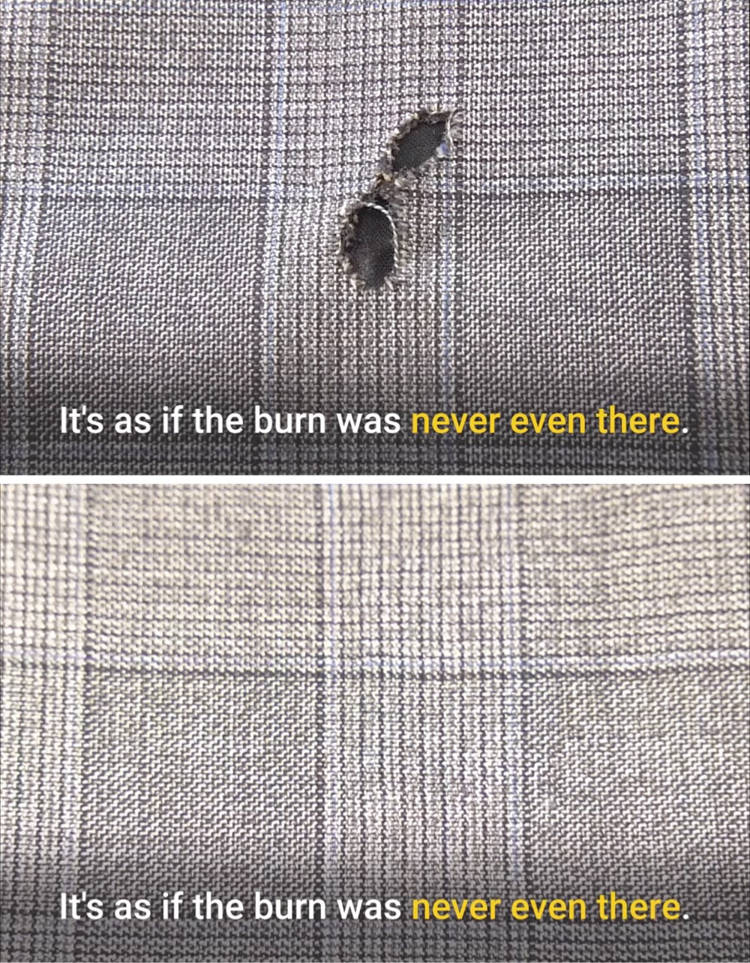|
Kaketsugi – literally ‘invisible mending’ in Japanese – is an amazing
cloth mending technique from Japan that involves repairing damaged cloth
to the point where you can’t even tell it was ever damaged.
With fast fashion being more popular than ever, cloth mending isn’t
nearly as necessary as it once was. Got a tear in one of your socks?
Just throw it in the trash and get a new pair, they’re cheap and readily
available. The same goes for virtually any other garment, so needle and
thread mending is a slowly disappearing craft. But what about special
garments, what happens when something truly special and dear to our
hearts becomes damaged? You can’t just go out and replace something of
sentimental value, but you can’t wear it with a hole in it either.
That’s where the magical art of kaketsugi comes in.
|
 |
|
As the name suggests, this unique cloth mending technique is all about
fixing damage like holes in fabric or severely torn threads in such a
way that the garment ends up looking as good as new. It sounds too good
to be true, but there is ample footage available online that documents
the procedure and the awe-inspiring result.
A few years back, a news report on kaketsugi by South Korean TV station
SBS went viral. It focused on the work of Japanese craftsman Takao
Matsumoto, who had been using the technique to restore clothing for over
55 years. Although Matsumoto isn’t the only one versed in the art of
kaketsugi – Japan’s NHK station featured father-daughter team, Kataoka
Tesshu and Goto Yoshiko, last year – the number of such masters is
undoubtedly dwindling.
|
 |
|
Kaketsugi is a painstaking process that begins with removing a small
piece of cloth from inside the garment, where its absence will not be
noticed. This piece is then brushed with an acetone-based solution that
makes the removal of individual threads a bit easier.
Stripping the piece of cloth down to individual threads is probably the
most painstaking part of kaketsugi, but masters of this craft claim that
using the exact same fabric as the one the garment is made of is
essential to making the mending truly invisible at the end.
The newly-obtained threads are then carefully sewn over the hole or
damaged area of the garment, from multiple directions, and from both
sides of the cloth. Once the sewing process is complete, an adhesive
bond is applied over the repaired area, and the leftover threads are
used to mask the damage even more.
Finally, the area repaired with kaketsugi is ironed out. That helps
smooth everything out and at this point, it’s almost impossible to see
where the hole was in the first place. The garment looks pristine.
Interestingly, invisible mending works just as well on small holes of
just a few millimeters in size, as it does on large ones of over 3
centimeters in diameter. It’s just that a large damaged area will take
more time to fix, so the larger the hole is, the more expensive the
repairs.
According to the website of Kimono Totonoe, a company that claims to
employ kaketsugi masters, prices for repairs start at $136+shipping for
holes of up to 0.5cm in diameter and go up to $362+shipping for holes of
up to 3cm. Anything over that will have to be priced separately,
depending on the fabric and complexity of the job.
Kaketsugi invisible mending may seem expensive, but keep in mind that it
is usually reserved for special garments with sentimental or historical
value. Plus, the work and sheer time that goes into it is definitely
worth proper compensation. |
|
|
|
|